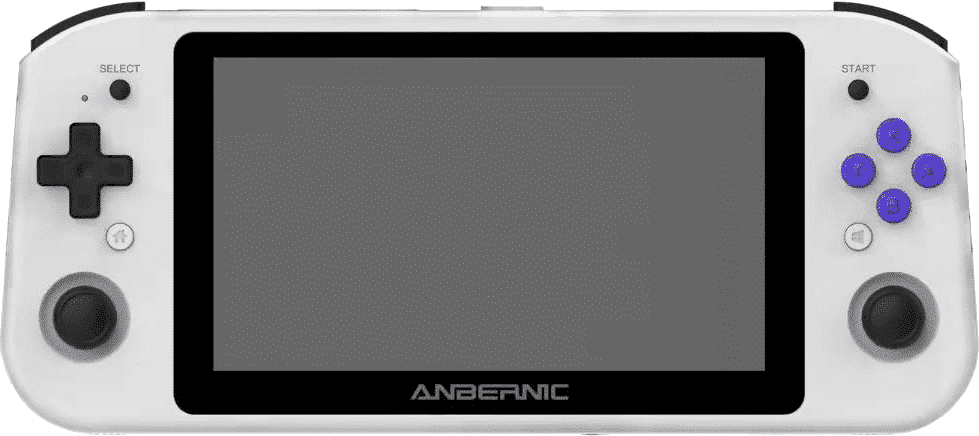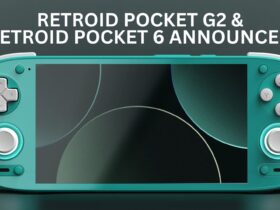Praėjusios savaitės pabaigoje retro žaidimų delninių kompiuterių gamintojas ANBERNIC pateikė patentą, kuris, atrodo, yra jų naujausias būsimas delninis kompiuteris. Ypač dėkojame „discord" vartotojui NOirBRight už tai, kad atkreipė mūsų dėmesį į šias ekrano nuotraukas.
Ar ANBERNIC kuria WINDOWS delninį kompiuterį?
Nors oficialaus patvirtinimo dar nėra, jau kurį laiką sklando gandai apie galimą ANBERNIC įsiveržimą į „Windows" įrenginių sritį. Tačiau iš pačių ANBERNIC atstovų kol kas nieko nebuvo girdėti.
Šie gandai sklando maždaug tiek pat laiko, kiek nešiojamųjų kompiuterių scena žino apie tokius įrenginius kaip GPD WIN 3 ir „Steam Deck". Daugelis mano, kad bandymas sukurti „Windows" pagrindu veikiantį nešiojamąjį kompiuterį yra neišvengiamas.
„Windows" pagrindu veikiantis delninis kompiuteris būtų ryškus atotrūkis nuo „Linux" (o dabar ir „Android") pagrindu veikiančių delninių kompiuterių, kuriuos bendrovė yra įpratusi naudoti. Suteikiama precedento neturinti laisvė galutiniam vartotojui naudotis įrenginiu.
ANBERNIC Windows delninio kompiuterio vaizdai
2022 m. sausio 14 d. ANBERNIC pateikė naujo delninio kompiuterio patentą. Prietaiso vaizdai pasirodys vėliau, o tai, ką pamatysime, išanalizuosime išsamiau. Deja, nebuvo paminėtos jokios specifikacijos, todėl šiuo metu negalime patvirtinti, ar delninis kompiuteris yra „žemos specifikacijos", ar „aukštos specifikacijos" įrenginys.
Įrenginio priekis

Nešiojamojo kompiuterio priekis primena beveik visus per pastaruosius kelerius metus rinkai pateiktus žaidimų nešiojamuosius kompiuterius. Jis turi tokį patį dvigubą analoginį ABXY/D-Pad išdėstymą, kokį matome tokiuose įrenginiuose kaip AYA NEO 2021, RG351MP ir įvairiuose kituose.
Keletas šio prietaiso priekinės dalies požymių iš karto leidžia teigti, kad tai ANBERNIC modelis. Pradedant logotipu pažymėtais rėmeliais, ant kurių aiškiai matomas ANBERINC prekės ženklas, ir baigiant paleidimo ir pasirinkimo mygtukais, kurie labai panašūs į esančius RG351 įrenginiuose. Labai aišku, kas jį sukūrė.
Įprastinį įvesties elementų rinkinį papildo dar du papildymai - HOME klavišas, esantis tiesiai po D-padu. Ir, atrodo, WINDOWS klavišas, esantis po ABYX klavišais. Kadangi yra ir langų, ir namų klavišai, galima tikėtis, kad įrenginys turės savotišką jutiklinį ekraną.
Įrenginio galinė dalis

Galinė įrenginio dalis yra gana tuščia, išskyrus oro ventiliacijos angą. Tai rodo, kad prietaisas yra aktyviai aušinamas, kaip ir RG552.
Įrenginio viršus

ANBERNIC, regis, perėmė daugelyje šiuolaikinių žaidimų valdiklių naudojamą pečių mygtukų išdėstymą. Nors dėl to prietaisas tapo šiek tiek storesnis, tai yra geriau, nes natūraliai sukuriamas ergonomiškesnis dizainas.
Prietaiso viršuje yra išmetimo anga, kuri sujungta su oro įsiurbimo anga įrenginio gale.
Galiausiai įrenginio viršuje yra trys sąsajos. Tai yra aparatūros atstatymo mygtukas (neįprasta, jei įrenginys turi įjungimo mygtuką), tam tikros formos A tipo USB prievadas. Ir C tipo USB prievadas, pažymėtas kaip „DC/OTG", greičiausiai naudojamas tiek įkrovimui, tiek kitoms laidinėms jungtims.
Įrenginio dugnas

„ANBERNIC" langų delninukės apačia taip pat yra palyginti nevaisinga, joje yra tik dvi funkcijos, į kurias verta atkreipti dėmesį.
Pirmoji iš šių funkcijų yra 3,5 mm garso lizdas. Prie jos galite prijungti pasirinktas ausines.
Antroji - tai dvi garsiakalbio angos kiekviename prietaiso krašte. Tikimės, kad palaikoma stereo išvestis.
Dešinėje garso lizdo pusėje taip pat yra paslaptingas juodas taškas, kuris, atrodo, yra mikrofonas.
Įrenginys į kairę
Kairėje prietaiso pusėje matome garsumo ir įjungimo klavišus. Be to, čia daugiau nieko nėra.
Tačiau šoninis prietaiso profilis leidžia geriau suprasti prietaiso ergonomiką. Ant peties sudėti mygtukai užleidžia vietą patogiam grioveliui, į kurį galėsite įsitaisyti pirštais.
Apskritai šis įrenginys turėtų būti daug patogesnis ilgesnėms žaidimų sesijoms nei ankstesni ANBERNIC įrenginiai.

Įrenginio teisė

Dešinioji prietaiso pusė rodo, kad ANBERNIC ėmė pavyzdį iš kitų delninių kompiuterių gamintojų.
Yra jungiklis, nurodantis galimybę perjungti pelės ir žaidimų kilimėlio režimus. Panašiai kaip GPD WIN 3 jungiklis.
Taip pat yra mygtukas su klaviatūros piktograma. Tikriausiai skirtas ekrano klaviatūrai įjungti. Panašus į AYA NEO 2021 Pro ir OneXPlayer esantį mygtuką. Tai beveik neabejotinai patvirtina, kad įrenginys turi turėti tam tikrą jutiklinį ekraną.
Santrauka
Ką manote apie šį dizainą? Manome, kad akivaizdu, jog ANBERNIC teisingai atsižvelgia į savo konkurentus šioje srityje.
Dar vienas dalykas, į kurį reikėtų atkreipti dėmesį, - į kokią rinką orientuojasi ANBERNIC su šiuo modeliu. Ar tikitės, kad jie tiesiogiai bandys konkuruoti su GPD, One-Netbook ir AYANEO, išleisdami aukštos klasės įrenginį? O gal jie ketina orientuotis į palyginti neišnaudotą biudžetinę „Windows" delninių kompiuterių rinką?
Kad ir kas iš to išeitų, mes tikrai nekantraujame tai pamatyti!
[azp_custom_product id="15″]











